June 20, 2025 | 14:35 GMT +7
June 20, 2025 | 14:35 GMT +7
Hotline: 0913.378.918
June 20, 2025 | 14:35 GMT +7
Hotline: 0913.378.918
Vietnam Agriculture News has recently had a conversation with Mr. Tran Dinh Luan, Director General of the Directorate of Fisheries (MARD) about the trend of sustainable seaculture in face of climate change.
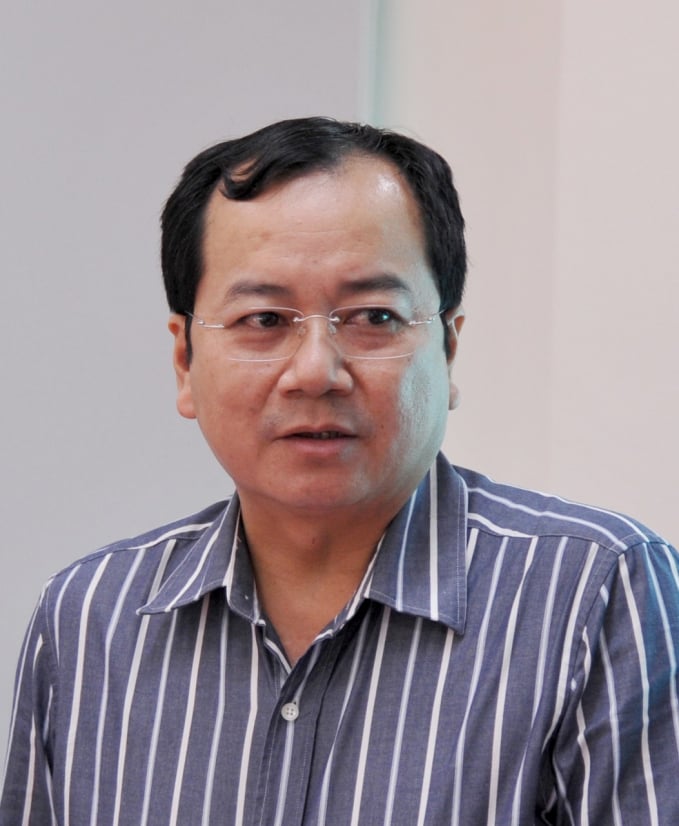
Mr. Tran Dinh Luan, Director General of the Directorate of Fisheries (MARD). Photo: KS.
Dear sir, what are our country’s achievements in the field of seaculture over the past time?
Vietnam’s seaculture has made strong progress both in the pond and cage culture.
Seaculture has spread its influence in many coastal provinces and cities, showcasing development in terms of species diversity from marine fish to crustaceans and mollusks, as well as the culture scale and methods.
Since then, the area, volume, productivity, farming output and production value increased remarkably. In the 2010 - 2020 period, the volume of sea cages increased approximately 18 times, from 217,600 m3 in 2010 to 3,425,057 m3 in 2020 (36%/year).
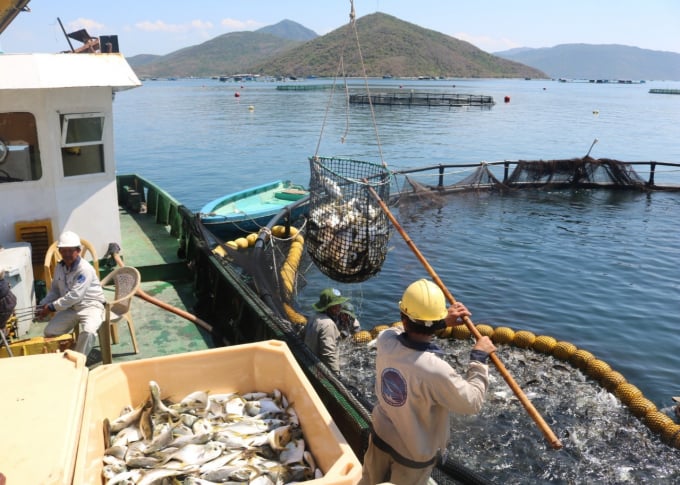
Vietnam's seaculture has experienced strong growth in recent years. Photo: KS.
At present, most of the popular seaculture subjects have produced artificial seeds. Advanced and high-productivity mariculture procedures have been perfected with many culture models achieving high economic efficiency.
The technology of making cages using HDPE (High Density Polyethylene) (square/rectangular cages, round cages) and materials to replace foam floats have also been initially applied in seaculture in many areas to reduce the pressure of environmental pollution and better adapt to climate change.
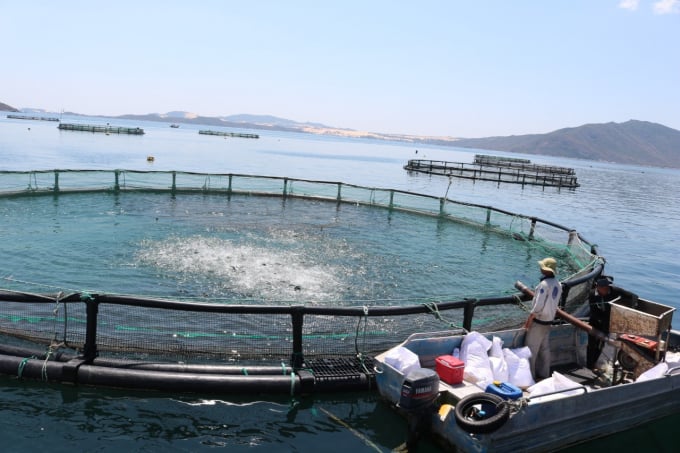
HDPE cages can withstand storms and strong winds, so farmers are less worried about the risks of natural disasters. Photo: KS.
The results are commendable, but there remain limitations in Vietnam’s seaculture. This field still develops in a spontaneous manner, lacking detailed planning. Some culture areas overlap sea areas, creating disharmony with other fields such as tourism and port business. Seaculture infrastructure and support services are deficient, and the people’s production techniques have not met the requirements.
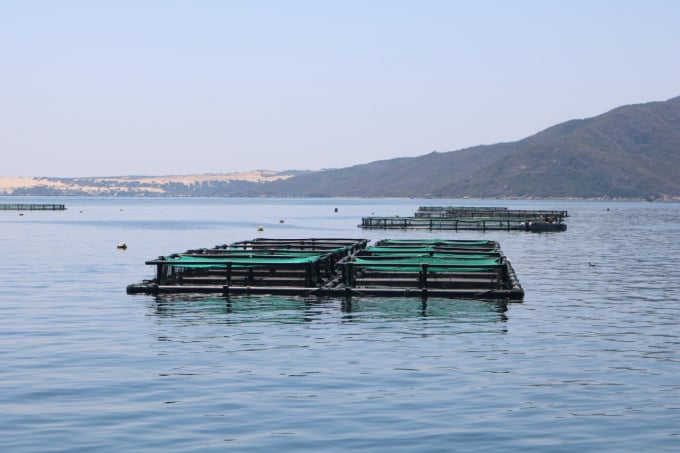
Sea farmers need the information to understand the benefits of HDPE cages. Photo: KS.
Due to these reasons, the application of safe and effective new materials is an inevitable trend for sustainable development, especially in offshore and open seaculture where traditional farming is inapplicable.
So can you explain in more detail the benefits of changing the format of farming in wooden cages to HDPE cages?
We can confirm that the HDPE cage's durability, as well as resistance to climate change such as storms, waves and wind, will be better than wooden cages. Farmers will gain a higher chance of minimizing damage to seaculture products.
HDPE cage will also help farmers better protect the environment. In particular, when we use HDFE cages, advanced equipment can be installed to increase the performance of the farming procedure, resulting in higher efficiency.
A number of enterprises have currently produced a system of cages, rafts, buoys and some specialized equipment using HDPE to serve seaculture. But we need to continue to encourage more businesses to participate in the production using new materials so that farmers can produce more sustainably.
The problem lies in deploying new HDPE material simultaneously and appropriately in seaculture, so what solutions should the localities need to orient and implement?
First of all, localities need to base on the content of the Seaculture Scheme approved by the Prime Minister in Decision 1664/QD-Government dated October 4, 2021 as well as the locality’s actual conditions to direct the formulation of seaculture procedures. The next step is to submit to competent authorities the implementation plan for the scheme and organize the implementation process in a timely manner.
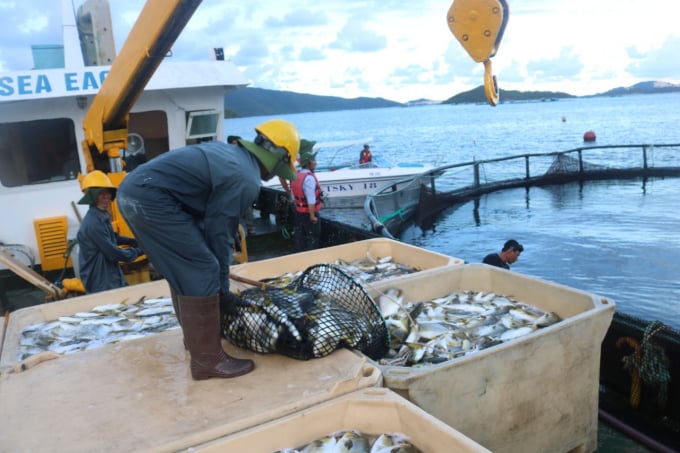
Harvesting golden pompano in Van Phong Bay, Khanh Hoa province. Photo: LK.
Localities need to allocate funds from the budget, mobilize legal and regulated capital sources to organize the implementation in their areas every year, and at the same time review and rearrange coastal seaculture activities to match the content of the scheme.
Switching to HDPE cage farming will require a larger investment, so there may be cases of people not having enough money or being afraid to make such a big investment. Localities therefore need to have specific models so that farmers can see the effectiveness clearly while perfecting appropriate support and encouragement policies for farmers to deploy the models simultaneously.
The Directorate of Fisheries will coordinate with localities in implementing, replicating and perfecting the process of raising key species that are storm-tolerant and adaptive to climate change; transfer and apply new technologies to increase productivity, output and protect the ecological environment; treat the environment and diseases in seaculture; research and apply green, environmental-friendly and material-saving seaculture models.
Translated by Samuel Pham
![Turning wind and rain into action: [9] Digitizing hydrometeorological data in response to climate change](https://t.ex-cdn.com/nongnghiepmoitruong.vn/608w/files/news/2025/06/17/z6704423696987_15fd32ffc26d590d204d520c9dac6786-nongnghiep-165943.jpg)
(VAN) Farmers have begun accessing hydrometeorological applications to adjust their cropping schedules, aiming to ensure productivity and adapt to climate change.
![Turning wind and rain into action: [8] Real-time salinity detection and early warning technology](https://t.ex-cdn.com/nongnghiepmoitruong.vn/608w/files/news/2025/06/17/z6704423696987_15fd32ffc26d590d204d520c9dac6786-nongnghiep-151127.jpg)
(VAN) Thanks to the integration of modern hydrological-hydraulic models, remote sensing technologies, and artificial intelligence, the accuracy of hydrological forecasting has significantly improved.
![Turning wind and rain into action: [7] Early disaster warnings help marine farmers minimize losses](https://t.ex-cdn.com/nongnghiepmoitruong.vn/608w/files/news/2025/06/17/z6704423696987_15fd32ffc26d590d204d520c9dac6786-nongnghiep-142942.jpg)
(VAN) In recent years, thanks to early disaster warnings and forecasting, marine farmers in Khanh Hoa province have been able to reduce risks and losses, thereby improving production efficiency.
![Turning wind and rain into action: [6] ‘Four on-the-spot’ disaster management software](https://t.ex-cdn.com/nongnghiepmoitruong.vn/608w/files/news/2025/06/17/e5a48259d6a262fc3bb3-nongnghiep-183800.jpg)
(VAN) By simply activating the scenario on the disaster management software, the relevant authorities immediately know how many households need to be evacuated, where to evacuate them to, and by what means of transportation…
![Turning wind and rain into action: [5] Hue applies modern technology in disaster forecasting](https://t.ex-cdn.com/nongnghiepmoitruong.vn/608w/files/news/2025/06/17/z6704423696987_15fd32ffc26d590d204d520c9dac6786-nongnghiep-093938.jpg)
(VAN) In Hue city, modern technology has recently been applied in meteorological and hydrological forecasting and warning, helping to reduce the damage caused by natural disasters.

(VAN) A cutting-edge farming technique being implemented on an experimental ranch in Arizona's Sonoran Desert has already saved a billion gallons of water over five years, according to Civil Eats.

(VAN) Poultry and pig production and the environment can be boosted through enhanced water technology, according to new research.